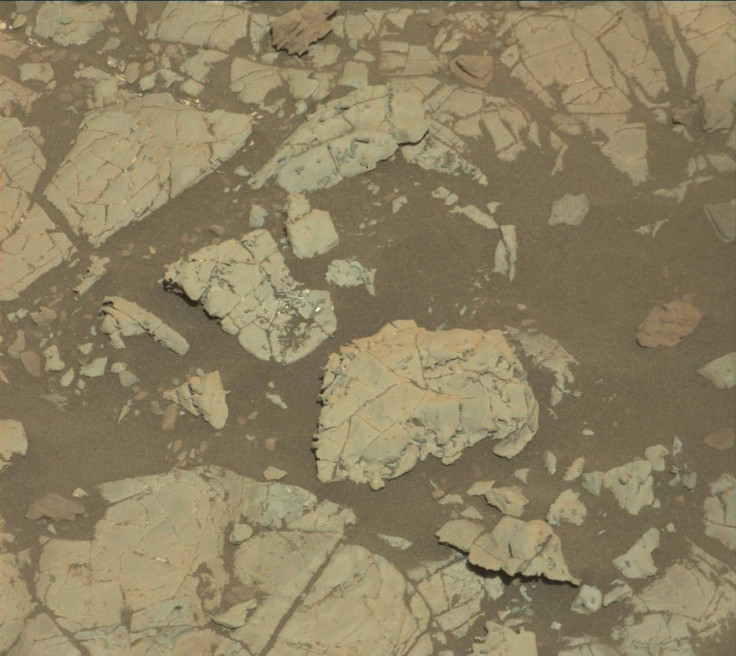Mysterious 'stick-like figures' spark theories about ancient creatures on Mars
The formations captured by the Curiosity rover are one to two millimetres wide and up to five millimetres long.

Nasa triggered a wave of wild speculation on 3 January after unveiling an image of mysterious stick-like figures on Mars. The dark formations, which appear to be etched on rocks, were captured by the Curiosity rover on the Red Planet's Vera Rubin Ridge. However, scientists don't really know what these figures actually are.
The weird rock formations, as Nasa describes them, are one to two millimetres wide and up to five millimetres long. They are too tiny to be observed but were captured by Curiosity's Mars Hand Lens Imager (MAHLI) in a series of highly detailed close-up shots.
Meanwhile, back on Mars... I’m checking out these stick-like figures. Each is about a quarter-inch long. Maybe they're crystals? Or they could be minerals that filled spaces where crystals dissolved away. Stay tuned! Science continues. pic.twitter.com/4oR70BVht3
— Curiosity Rover (@MarsCuriosity) January 4, 2018
Nasa got to these features after noticing a blue-hue in the same region from the Mars Reconnaissance Orbiter, which has been orbiting the Red Planet since 2006. Prompted by the strange colour, Curiosity wheeled up to the location, only to find the strange figures.
In the original post shared on Twitter the agency posited that these figures could be crystals or the minerals that filled spaces where crystals dissolved away. However, the exact description and what caused them continue to remain unknown.
The agency has also shared a wide-angle image of the area, showcasing the exact spot where the dark-toned figures were captured.
Nasa will continue its science experiments to unlock the mystery behind the figures but Twitter users have already started making wild guesses about what the formations might be. While some have theories about Viking runes and tyre tracks on the Martian surface, others have explored around the idea of fossilised remains of space dinosaurs and sandworms.
"They look remarkably similar to Ordovician trace fossils I have studied and photographed here on Earth," Barry DiGregorio, a researcher at the Buckingham Centre for Astrobiology in the UK, told Inside Outer Space. "If not trace fossils, what other geological explanations will Nasa come up with?"
A trace fossil could be a footprint, trail, burrow, or other traces of a creature rather than the creature itself. However, as it is still too early to predict something like that, Ashwin Vasavada, Curiosity project scientist at Nasa's Jet Propulsion Laboratory says: "We certainly won't jump to that as our first interpretation."
For now, Curiosity's Alpha Particle X-ray Spectrometer and ChemCam instruments are being used to study the chemical composition of the weird formations and get new insights into the figures.





















